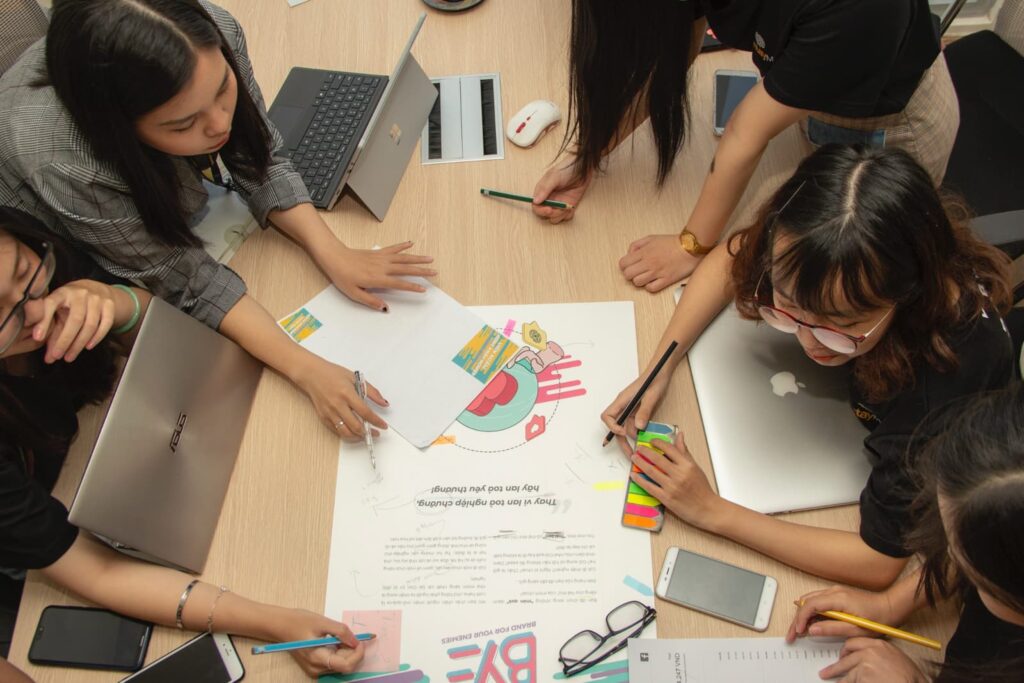Teaching Financial Literacy to Kids Using Cryptocurrencies
In a time when technological innovations are changing every part of our lives, financial literacy is now an essential life skill for the next generation. A novel, interesting, and progressive way to teach children about money management is to do so through the prism of cryptocurrencies, as established financial systems give way to innovative digital currencies. Children can be prepared to navigate the complicated financial landscapes of the future by including the foundations of blockchain technology and digital assets into their education. This essay explores creative ways to use the fascinating world of cryptocurrency to make financial literacy education engaging and applicable for young readers.
Comprehending Financial Literacy
Financial literacy encompasses the skills and knowledge needed to make informed financial decisions, including understanding budgeting, saving, and investing. Budgeting involves tracking income and expenses to manage money wisely, while saving fosters the habit of setting aside funds for future use and financial security. Investing teaches the principles of risk and return by demonstrating how to grow wealth through various financial instruments like stocks, bonds, and cryptocurrencies. Additionally, understanding financial systems, such as banks, credit, interest rates, and financial products, is crucial for grasping how money flows through an economy. Early financial education equips children to manage money responsibly, avoid debt, and make wise decisions for long-term financial well-being, especially as modern financial tools like cryptocurrencies become increasingly relevant.
The Ascent of Digital Money
Digital currencies have become an important part of the world economy and have completely changed the way we think about and use money. Cryptography protects these virtual or digital currencies by guaranteeing the security and integrity of transactions. Cryptocurrencies, as opposed to conventional currencies, function on decentralized networks called blockchains. A blockchain is a type of distributed ledger that is transparent and impervious to tampering since it records every transaction via a network of computers. Because of its decentralized structure, transactions may be completed more quickly, securely, and affordably thanks to the removal of middlemen like banks.
Navigating the financial environment of the future requires an understanding of cryptocurrencies and the technology that powers them. Understanding the fundamentals of blockchain technology and digital currency will be more and more important as more sectors use them. From decentralized finance (DeFi) platforms that offer financial services without the need for traditional middlemen to smart contracts that automatically carry out transactions when certain criteria are satisfied, cryptocurrencies offer cutting-edge financial solutions. By understanding these ideas, people can investigate new avenues in this developing digital economy and have a greater understanding of the possible effects on global finance.
Why Instruct Children in Cryptocurrency?
- Contemporary Financial Systems
As the financial industry develops, digital currencies are playing an increasingly important role in the world economy. Digital and decentralized forms of money are supplanting, and occasionally even replacing, the traditional financial systems that were formerly dominated by banks and tangible currencies. Educating children about cryptocurrencies helps them get ready for a world in which they are used extensively in financial transactions. Knowing the basics of cryptocurrency helps kids adapt and use new technology with confidence. It also helps them navigate an economy that is shifting toward digital and decentralized financial systems.
- Future Relevance
As cryptocurrencies become more integrated into industries like technology, retail, and banking, their significance is predicted to increase. Knowledge of cryptocurrencies will be invaluable for kids as they enter adulthood, both personally and professionally. Understanding digital currencies and blockchain technology can open career opportunities in fields like fintech, cybersecurity, and software development. On a personal level, familiarity with cryptocurrencies helps kids make informed decisions about investments, online transactions, and entrepreneurial ventures. Learning about these technologies today ensures children are well-prepared for a digital economy, keeping them ahead as the world advances.

Strategies for Using Cryptocurrencies to Teach Financial Literacy
Interactive Learning Tools
- Interesting Games and Simulations: Make learning about financial literacy enjoyable by utilizing interactive resources like games and simulations. Through interesting, practical scenarios, these techniques make difficult financial concepts—like investing, saving, and budgeting—more understandable.
- Educational Apps and Platforms: Numerous apps and online platforms offer gamified learning experiences focused on cryptocurrencies and financial management. Apps like CryptoKitties and Pigzbe introduce kids to blockchain technology and digital currencies through hands-on experiences.
- Interactive Lessons: Utilize virtual classrooms or workshops where kids can participate in lessons about cryptocurrencies. Activities like virtual trading exercises help kids learn about buying and selling cryptocurrencies in a simulated environment.
Real-World Applications
- Practical Demonstrations: Show how cryptocurrencies are used in real life to help kids understand abstract concepts. Demonstrating a small purchase with Bitcoin can make the learning process tangible.
- Investing and Transactions: Introduce kids to investing by setting up a supervised cryptocurrency investment portfolio. This teaches market volatility, risk management, and informed decision-making.
- Real-World Examples: Discuss how businesses accept Bitcoin or how blockchain improves supply chain transparency. These examples help kids understand the broader impact of cryptocurrencies and their everyday uses.
Building a Curriculum
Key Topics to Cover
Fundamentals of Money and Transactions: Start with the basics of money, including its creation and history, its applications in daily life, and the idea of transactions. Describe the various types of money (cash, digital money), as well as the ways in which transactions take place in traditional and digital settings. Gaining a comprehension of more intricate financial topics is made possible by this core knowledge.
Overview of Blockchain Technology: Explain blockchain to children by dissecting its elements and operations. Describe blockchain’s function as a decentralized ledger, how it protects transactions, and why it’s regarded as a transparent and safe system. Make this complicated technology easier to understand by using comparisons and illustrations. For example, you could compare a blockchain to a digital ledger or a chain of information-recording blocks.
Understanding Risks Associated with Investments: Introduce children to the fundamentals of investing, covering stocks, bonds, and cryptocurrencies, as well as the idea of compound interest. Stress how crucial it is to comprehend market volatility and risk mitigation. Describe how the value of investments can rise or fall and how controlling risks is essential to making wise financial decisions. To demonstrate how investments function in the actual world, use simulations and examples.
Setting Learning Objectives
Define Clear Goals: Establish clear and measurable learning objectives for your financial literacy curriculum. These goals should align with the key topics covered and provide a roadmap for what students are expected to learn. Objectives could include:
- knowing some basic phrases about money and transactions in the financial domain.
- describing the operation of blockchain technology and its importance for transaction security.
- displaying an understanding of risk management techniques and investment principles.
- adopting secure financial practices when using the internet, such as protecting personal data and spotting potential frauds.
Practical Application: To support learning objectives, include practical exercises and real-world applications in the curriculum. Make a fake investment portfolio, for instance, to teach investing techniques, or run a blockchain transaction simulation to show how the technology functions in real life.
